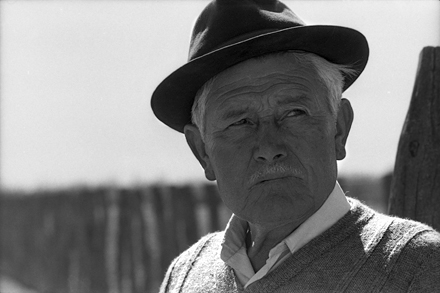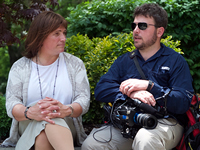Cochengo Miranda
(1974, 53 min.)
by Jorge Preloran
Distribution: DER
The extensive region of the Pampas in Central Argentina is one of the most fertile in the world. However, as the rains subside towards the West, the land becomes arid and dry. Here live a sparse population of rugged cattlemen whose nearest neighbor may be 10 miles away. The center of life is a well and a windmill to which the cattle come every day to drink, and then go off to find the scarce grasses in the vast plains where no fences are necessary.
Cochengo Miranda has lived here for over 30 years, and raised his family after marrying at 45. In his youth he had been an itinerant singer and ranch hand, but hung up his guitar when he finally settled down. He is descendant from early Spanish stock in the region, where many of its traditions are still kept alive even though transculturation is rapidly taking its toll.
During a whole year Prelorán visited this family several times, filming a variety of occurances that took place as the months and seasons passed. In each occasion he would record extensive monologues of don Cochengo as the basis for the film’s structure. The result is a warm, intimate portrait of life in a little-known region of the world, as told to us by the settlers themselves.
This is the style of film that Preloran has developed through the years based on the limitations of his equipment and budgets. He shot with a spring-wound 16mm Bolex camera, which accounts for the short length of the takes. He did not possess sync-sound equipment, so the soundtracks were later constructed painstakingly in order to give the impression that they are real. Because he could not record dialogues between his characters, he had to devise a style which appeared to be professional; so he used voice-over monologues. Thus his films are narrated by the protagonists themselves, conveying their feelings, wishes, philosophy and manners of expression, in order to complement the visuals rather than to just document what we see, or to be told by ‘experts’ how these people act or think, as is so common in ethnographic film.
It is interesting to point out that Prelorán does not consider his films pure ethnography, for he does not work with a scientific method nor is he interested in documenting material anthropology. He is more intent on capturing the human soul in its infinite varieties, and does not consider re-staging scenes for the camera a problem, if they are essentially truthful and do not call attention to themselves.




